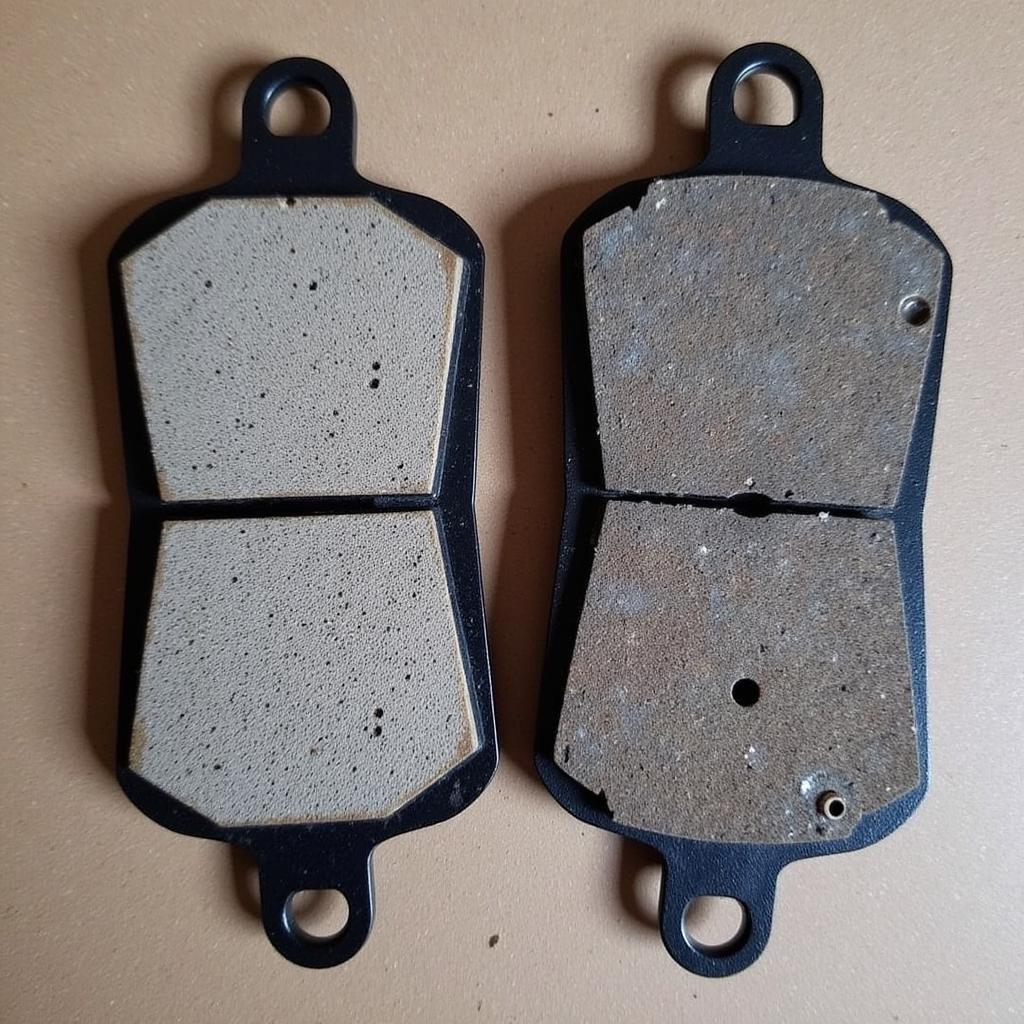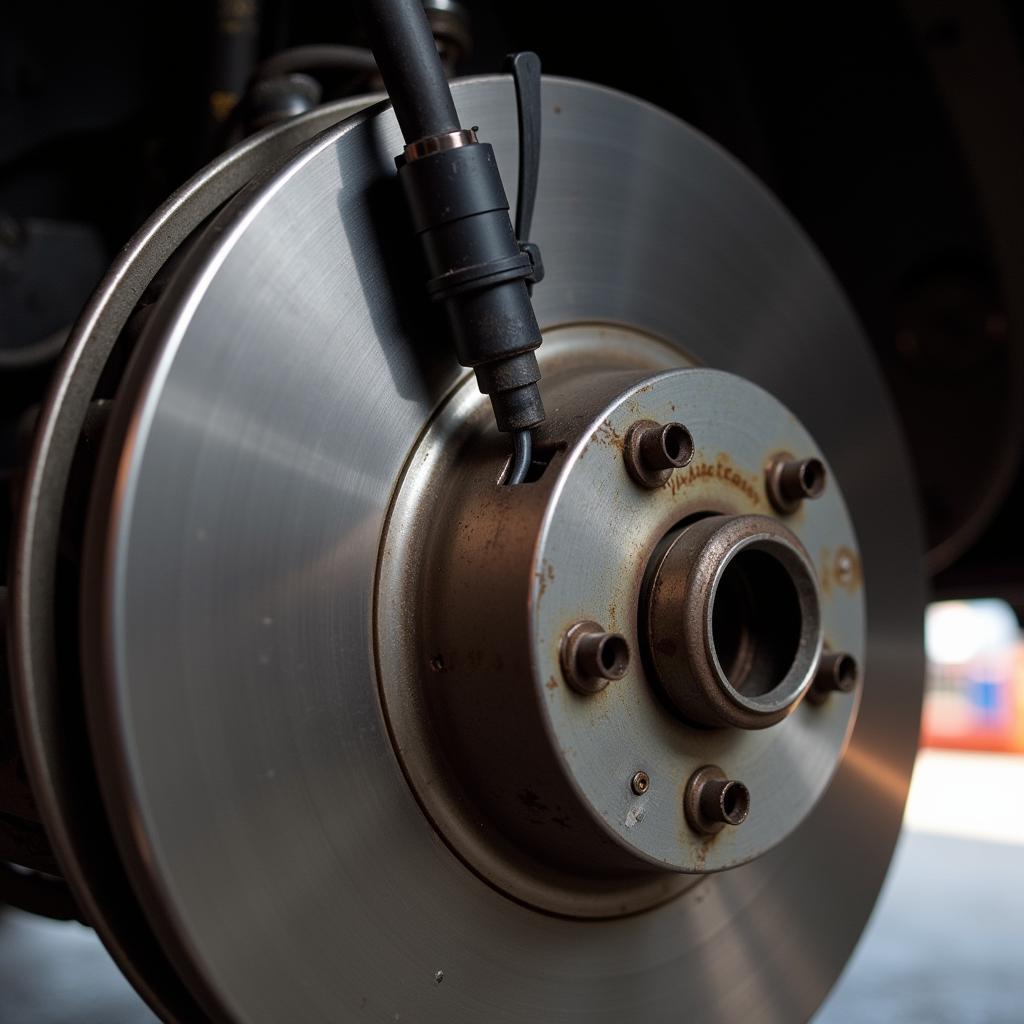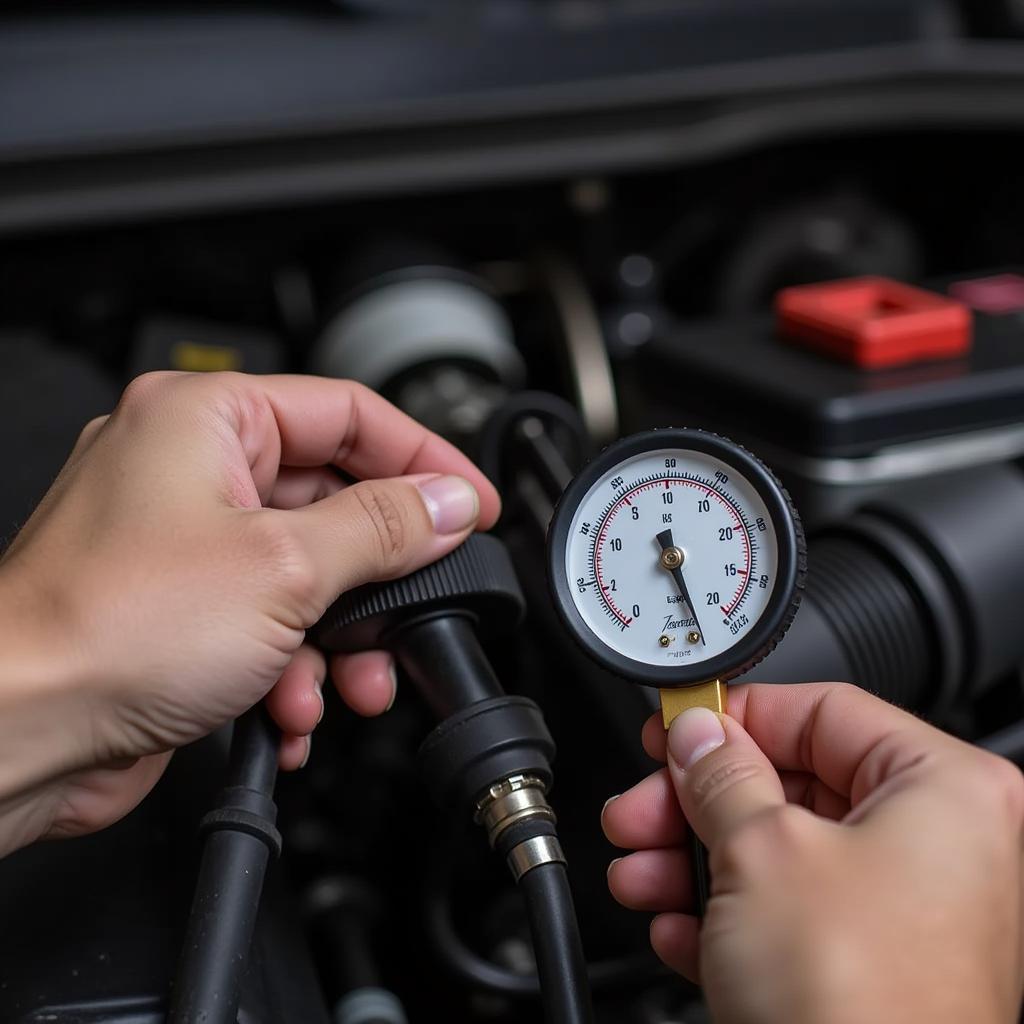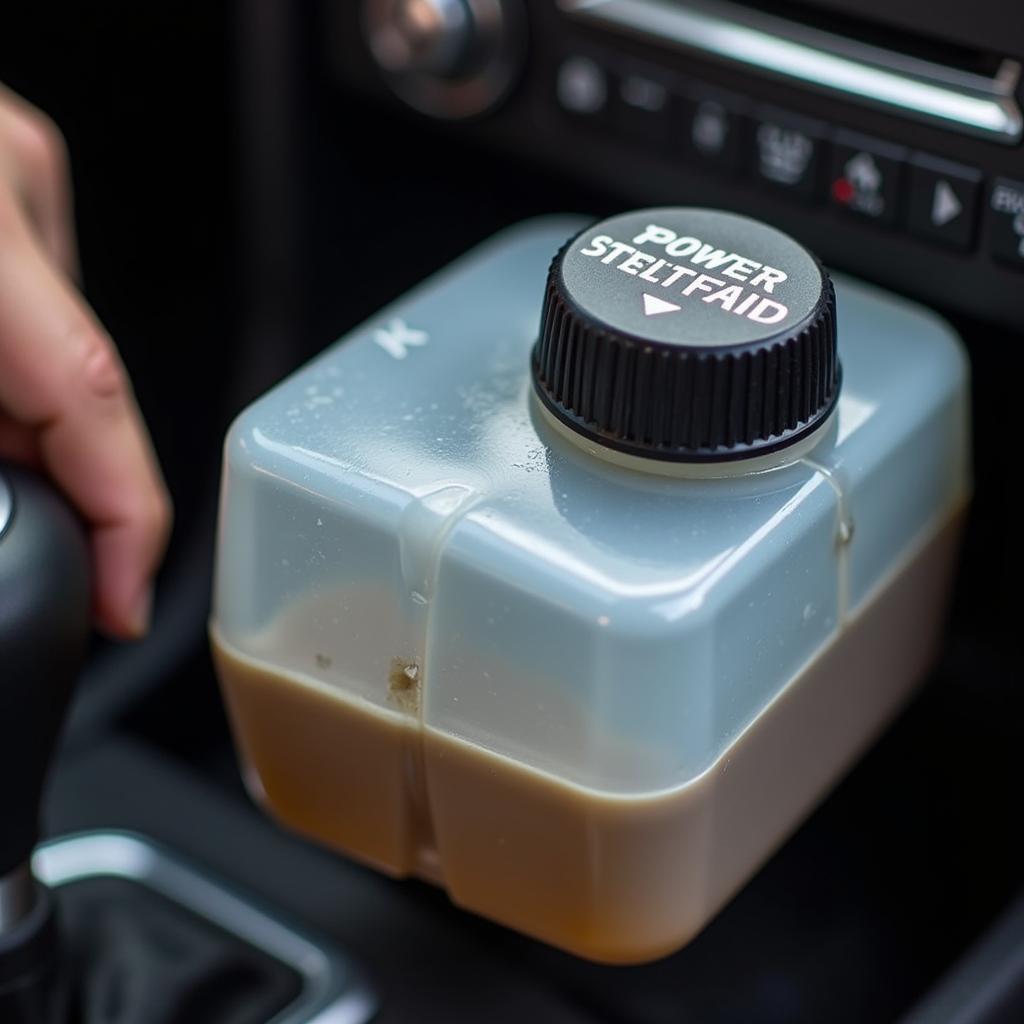That annoying little light on your dashboard – the brake pad warning light – has illuminated. Now, the question burning in your mind is: how long can I drive after the brake pad warning light comes on? The answer isn’t a simple one-size-fits-all, but we’ll delve into the factors affecting your brake pad lifespan and give you the information you need to make safe decisions.
Driving with worn brake pads is a serious safety hazard. While you might be tempted to ignore the warning light, understanding its implications is crucial for your safety and the longevity of your vehicle. It’s important to address the issue promptly to avoid further damage and ensure your safety on the road. Check out this helpful resource on why your brake warning light might have come on: why does my brake warning light came on.
Understanding the Brake Pad Warning Light
The brake pad warning light is designed to alert you when your brake pads are nearing the end of their lifespan. This light is triggered by a sensor embedded within the brake pad itself. When the pad wears down to a certain point, the sensor comes into contact with the rotor, completing a circuit and illuminating the warning light.
How Long Can You Drive with the Light On?
While there’s no magic number, driving with the brake pad warning light illuminated for an extended period is strongly discouraged. You might have anywhere from a few hundred miles to as little as 100 miles of safe braking left. However, this is a dangerous gamble. Continuing to drive on worn brake pads will not only compromise your stopping power but also potentially damage your rotors, leading to more costly repairs down the line.
Factors Affecting Brake Pad Lifespan
Several factors contribute to how quickly your brake pads wear down, including:
- Driving Style: Aggressive braking, frequent hard stops, and city driving contribute to faster wear.
- Vehicle Type: Heavier vehicles put more strain on the brakes, requiring more frequent pad replacements.
- Brake Pad Material: Different pad materials offer varying levels of performance and longevity.
- Road Conditions: Driving on rough terrain or in areas with a lot of stop-and-go traffic can accelerate brake pad wear.
 Worn Brake Pads Compared to New Ones
Worn Brake Pads Compared to New Ones
What to Do When the Light Comes On
When the brake pad warning light illuminates, it’s time to act. Don’t panic, but don’t ignore it either. Here are the recommended steps:
- Schedule an Inspection: Take your car to a qualified mechanic to assess the condition of your brake pads and other brake components.
- Avoid Heavy Braking: If possible, minimize hard braking and allow extra stopping distance.
- Don’t Delay Repairs: Replacing your brake pads as soon as possible is the safest course of action. Delaying repairs can lead to more extensive and expensive damage.
Signs of Worn Brake Pads Beyond the Warning Light
Even before the warning light comes on, you might notice other signs of worn brake pads, such as:
- Squealing or grinding noises when braking
- Vibration in the brake pedal
- Longer stopping distances
“Ignoring your brake pad warning light is like ignoring a ticking time bomb,” says automotive expert, Michael Stevenson. “It’s always best to err on the side of caution and address the issue promptly to avoid potentially dangerous situations.”
 Brake Pad Wear Sensor Triggering Warning Light
Brake Pad Wear Sensor Triggering Warning Light
If you own a BMW and need to reset the light after replacing the pads, check out this guide: how to clear brake pad warning light bmw.
Regular Brake Maintenance
Regular brake maintenance is essential for safe and reliable vehicle operation. In addition to addressing the warning light promptly, consider these preventative measures:
- Brake Inspections: Have your brakes inspected at least once a year or as recommended by your vehicle manufacturer.
- Brake Fluid Flush: Brake fluid absorbs moisture over time, which can reduce braking performance. Have your brake fluid flushed regularly according to your vehicle’s maintenance schedule.
- Quality Parts: When replacing brake pads or other components, use high-quality parts for optimal performance and longevity.
“Investing in regular brake maintenance is an investment in your safety,” advises automotive specialist, Sarah Chen. “It’s a small price to pay for the peace of mind that comes with knowing your brakes are in top condition.”
Conclusion
The brake pad warning light is a crucial safety feature. While you might be able to drive a short distance after the light comes on, it’s never recommended. Ignoring the warning light can lead to dangerous driving conditions and costly repairs. Address the issue promptly by having your brakes inspected and replaced as needed. Remember, proactive maintenance is the key to safe and reliable braking performance. For specific issues related to Honda CRV’s brake system, you might find this helpful: honda crv brake system warning. If you’re experiencing issues with your Integra’s brake warning light, specifically when it’s cold, this resource might offer some insights: integra brake warning light goes on when cold. Also, for BMW E36 owners dealing with a brake fluid warning light, this link can provide useful information: bmw e36 brake fluid warning light.
FAQ
- What does the brake pad warning light look like? It’s typically a circular symbol with an exclamation point in parentheses, or the word “BRAKE.”
- Can I replace my brake pads myself? While possible, it’s recommended to have a qualified mechanic perform this task.
- How much does it cost to replace brake pads? The cost varies depending on your vehicle make and model, and the type of brake pads used.
- How often should I replace my brake pads? This depends on your driving habits and vehicle type. Consult your owner’s manual for recommended intervals.
- Can worn brake pads damage my rotors? Yes, driving with worn brake pads can score or warp your rotors, requiring more expensive repairs.
- What if my brake warning light flashes? This could indicate a more serious problem with your ABS (Anti-lock Braking System).
- How can I extend the life of my brake pads? Avoid aggressive driving, coast when possible, and have your brakes inspected regularly.


